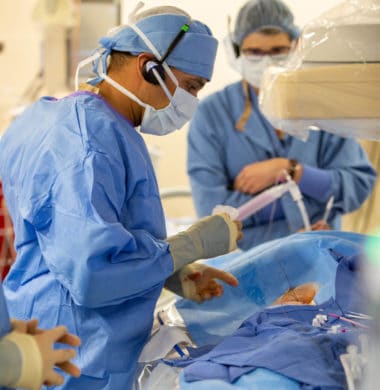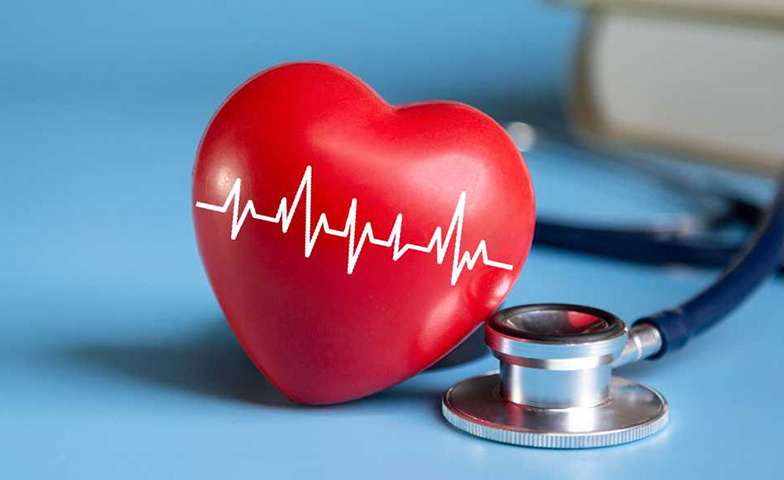The science behind stress and cardiovascular health from Dr Garcia’s perspective
The science behind stress and cardiovascular health from Dr Garcia’s perspective
Blog Article
Understanding the Value of Cardiology in Modern Medical Care Services
Cardiology plays a crucial duty in modern health care, particularly as cardiovascular disease proceeds to be the leading source of mortality worldwide. Breakthroughs in diagnostics and therapy have transformed client care, allowing earlier treatments and enhanced results. The shift towards precautionary cardiology equips people to manage their health and wellness proactively. As innovation continues to develop, the combination of cutting-edge remedies might better redefine cardiology's effect on public wellness, motivating a more detailed exam of arising trends and their effects.
The Frequency of Heart Illness and Its Effect On Public Health And Wellness
Although heart disease remains the leading reason of death internationally, its influence prolongs far past specific clients to affect public wellness systems and economic situations. The high prevalence of heart problem puts a considerable pressure on health care resources, demanding enhanced financing for treatment, recovery, and avoidance programs. Public health and wellness efforts should deal with threat aspects such as obesity, smoking, and less active lifestyles, which add considerably to the rising occurrence of heart conditions.Moreover, the economic worry connected with cardiovascular disease is tremendous, encompassing not just direct medical costs however additionally indirect expenses connected to lost performance and premature death. Neighborhoods face obstacles in managing these expenses, typically resulting in disparities in health care gain access to and results. As the populace ages and lifestyle-related risks continue to escalate, the seriousness for efficient cardiology treatments comes to be extremely important. Dealing with heart disease is not only a matter of individual health but additionally an essential public health priority.
Advancements in Cardiac Diagnostics and Imaging Techniques
Recent developments in cardiac diagnostics and imaging methods have actually reinvented the field of cardiology, enhancing the ability to detect and monitor heart problem. Methods such as cardiac MRI, CT angiography, and echocardiography have come to be significantly advanced, offering detailed photos of heart structures and functions. These methods enable the early identification of problems like coronary artery illness, cardiac arrest, and valvular disorders.Moreover, advancements in non-invasive diagnostics, such as wearable modern technology and remote tracking devices, have encouraged individuals and doctor. These devices assist in real-time tracking of heart rhythms and various other vital signs, bring about timely interventions. Furthermore, expert system is being integrated right into imaging analysis, boosting accuracy and efficiency in diagnosis.
Technologies in Treatment Options for Heart Issues
Recent developments in cardiology have actually resulted in significant advancements in treatment alternatives for heart conditions. These consist of innovative medical techniques that boost step-by-step outcomes and arising medications that offer brand-new avenues for treatment. As the field progresses, these innovations play an essential role in boosting client treatment and outcomes.
Advanced Surgical Techniques
Technologies in surgical techniques have actually changed the landscape of cardiology, providing brand-new expect patients with heart disease. Minimally invasive treatments, such as catheter-based treatments, have considerably lowered recovery times and healthcare facility keeps. Strategies like robotic-assisted surgery improve precision, enabling doctors to browse intricate physiological structures with greater accuracy. Additionally, improvements in imaging innovation promote real-time visualization throughout treatments, boosting end results. Transcatheter aortic valve substitute (TAVR) exhibits a breakthrough in dealing with aortic stenosis, enabling valve substitute without open-heart surgical treatment. In addition, hybrid techniques that integrate catheter-based and surgical methods provide customized remedies for numerous cardiac issues. These advanced medical strategies not only enhance patient safety and security yet likewise expand treatment alternatives, highlighting the important function of innovation in modern-day cardiology techniques.
Arising Medicines and Therapies
As the landscape of cardiology remains to develop, emerging therapies and drugs play an essential function in enhancing therapy choices for heart conditions. Innovations such as unique anticoagulants and progressed lipid-lowering agents have actually transformed the management of cardio illness, significantly decreasing patient morbidity and mortality. In addition, the advancement of gene treatments and regenerative medication uses encouraging opportunities for dealing with conditions formerly considered irreversible. Clinical tests are continuously revealing the efficacy of these treatments, pressing the limits of traditional therapies. The combination of electronic wellness modern technologies facilitates individualized medication, permitting for tailored treatment plans based on hereditary and way of living factors. Collectively, these improvements emphasize the vibrant nature of cardiology, improving client results and redefining criteria of treatment in modern healthcare.
The Role of Preventive Cardiology in Client Treatment
Precautionary cardiology plays a crucial role in patient care by concentrating on the identification of danger aspects that add to heart problem. Via way of living alteration strategies and early detection techniques, doctor can successfully reduce the occurrence of cardiovascular occasions - Cardiology Jupiter. This aggressive method not just boosts patient results but additionally promotes long-term health
Danger Element Recognition
While cardiovascular diseases remain a leading cause of morbidity and death worldwide, reliable danger element identification functions as a keystone of precautionary cardiology. Identifying threat aspects such as hypertension, family, diabetes, and hyperlipidemia background is crucial for very early intervention. Healthcare specialists use various evaluating techniques to assess these factors, enabling tailored safety nets. Furthermore, recognizing an individual's way of living selections, such as smoking cigarettes and physical lack of exercise, further informs risk assessments. This extensive analysis makes it possible for medical professionals to develop individualized treatment strategies targeted at mitigating risks. By prioritizing risk variable identification, health care systems can boost client results and decrease the overall burden of cardiovascular diseases, eventually adding to improved public health and wellness approaches and resource appropriation.
Way Of Life Modification Strategies
A wide range of studies highlights the crucial role of way of living adjustment methods in decreasing heart disease threat. These methods encompass dietary adjustments, enhanced physical task, smoking cessation, and weight monitoring. By adopting a heart-healthy diet plan abundant in fruits, vegetables, whole grains, and lean proteins, individuals can reduce cholesterol degrees and blood stress. Normal exercise strengthens the heart and improves total cardio wellness. Additionally, stopping cigarette smoking considerably lowers the threat of heart condition and boosts recuperation prices for those with status quo. Weight management even more contributes to cardio wellness by minimizing various other danger elements such as diabetes and hypertension. Applying these way of living alters not only promotes specific wellness however also offers as a keystone of precautionary cardiology in client care.
Very Early Detection Techniques
Lifestyle alterations considerably add to lowering cardio illness risks, yet they are most efficient when coupled with very early detection techniques. Preventative cardiology highlights the significance of recognizing prospective heart issues prior to they intensify into severe conditions. Strategies such as blood stress monitoring, cholesterol testing, and advanced imaging modern technologies like echocardiograms play vital roles in reviewing cardiovascular wellness. Biomarkers and genetic screening also boost the precision of very early discovery, permitting customized precautionary approaches. Regular heart risk examinations empower medical care companies to intervene proactively, potentially protecting against cardiovascular disease and strokes (Cardiology Jupiter). By incorporating these early discovery methods right into regular care, people can benefit from timely way of living interventions and targeted therapies, inevitably enhancing and enhancing end results top quality of life
Integrating Innovation Into Cardiology Practices
As innovations in technology remain to reshape numerous areas, the integration of ingenious devices and systems right into cardiology practices has come to be essential for improving individual treatment and end results. Telemedicine platforms permit cardiologists to keep track of people from another location, improving access to care while decreasing the problem on medical care facilities. Wearable devices, such as smartwatches, allow constant heart price monitoring, notifying both individuals and medical professionals to prospective problems in real-time. Furthermore, expert system (AI) is being used to examine large amounts of cardiac data, assisting in very early medical diagnosis and tailored therapy strategies. Advanced imaging methods, including 3D echocardiography, improve visualization of heart structures, leading to more specific treatments. Digital health and wellness records (EHRs) streamline patient details monitoring, making sure that cardiologists have instant access to essential data. With each other, these technological developments are changing cardiology, advertising positive management and boosted health and wellness outcomes for patients with cardio conditions.
The Importance of Person Education and Involvement
Client education and learning and interaction play a crucial function in the monitoring of cardiovascular health. By equipping people with understanding about their problems, treatment options, and lifestyle changes, medical care providers encourage people to take an active duty in their treatment. This aggressive technique can lead to boosted adherence to suggested drugs, dietary changes, and exercise regimens, ultimately lowering the danger of complications.Engagement likewise cultivates a solid patient-provider partnership, urging open interaction and trust. When individuals really feel informed and included, they are most likely to voice worries and anonymous ask concerns, which can lead to far better medical end results. Furthermore, instructional resources, such as workshops or digital platforms, can improve understanding and advertise self-management methods. On the whole, focusing on person education and engagement is necessary for boosting cardio wellness, boosting lifestyle, and decreasing health care prices linked with cardio diseases.
Future Trends in Cardiology and Their Potential Impact

Frequently Asked Concerns
What Lifestyle Adjustments Can Reduce Heart Illness Threat?
The existing inquiry addresses way of living modifications that can greatly reduce cardiovascular disease risk. Cardiologist near me. Embracing a well balanced diet plan, taking part in routine exercise, preserving a healthy and balanced weight, managing stress and anxiety, and preventing tobacco can significantly boost cardiovascular health and wellness
Exactly How Can I Acknowledge Early Signs of Heart Issues?
Identifying early signs of heart troubles entails monitoring signs such as breast pain, lack of breath, fatigue, and irregular heartbeat. Prompt recognition of these indications can trigger required medical assessment and intervention for much better results.
What Are the Distinctions In Between Cardiologists and Heart Surgeons?
The distinctions in between cardiologists and heart specialists hinge on their duties; cardiologists mostly manage and identify heart disease via non-invasive methods, while heart specialists do medical treatments to correct architectural heart issues. Each plays a crucial, unique duty.

Just how Usually Should I Obtain My Heart Wellness Checked?
The regularity of heart medical examination varies based upon individual danger variables. Generally, grownups should undergo assessments each to two years, while those with existing problems may call for more frequent analyses as advised by medical care experts.
What Role Does Genes Play in Heart Illness Risk?
Genes considerably affects heart illness risk, with domestic patterns indicating acquired problems. Particular genetics can predispose people to hypertension, cholesterol concerns, and other cardio issues, highlighting the relevance of hereditary screening in examining heart health. Heart illness remains the leading reason of fatality internationally, its influence prolongs much beyond private people to affect public health and wellness systems and economies. Public health and wellness campaigns should resolve threat aspects such as obesity, smoking cigarettes, and sedentary way of lives, which add greatly to the increasing occurrence of heart conditions.Moreover, the financial concern connected with heart condition is immense, including not just direct medical expenses however additionally indirect expenses associated to shed performance and premature mortality. Precautionary cardiology plays an important function in person care by focusing on the recognition of threat variables that navigate to these guys contribute to heart condition. Artificial knowledge (AI) and equipment learning are improving diagnostics and individual monitoring, allowing early discovery of heart illness. The distinctions between cardiologists and heart cosmetic surgeons exist in their roles; cardiologists largely identify and manage heart problems through non-invasive methods, while cardiac surgeons carry out surgical treatments to remedy architectural heart concerns.
Report this page